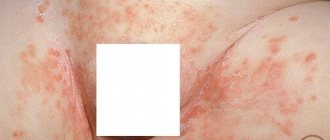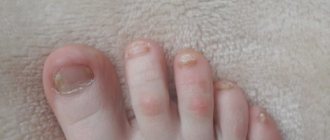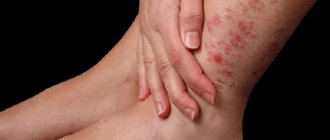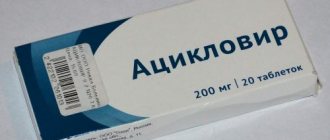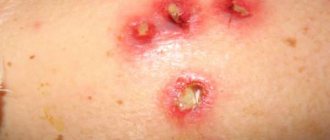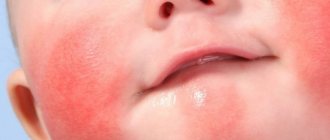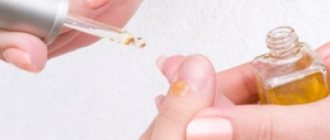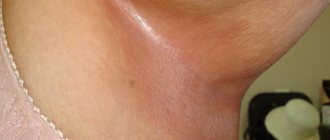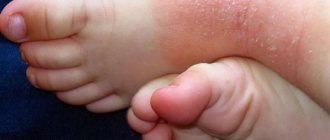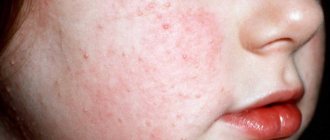Childhood vitiligo looks like adults - white spots on one or more parts of the body. The disease is treatable, with ultraviolet treatment having the greatest effect.
In childhood and adolescence, great importance is attached to appearance. Stressful situations and ridicule from peers can aggravate the disease.
According to statistics from the Russian Vitiligo Society, out of 100 patients with vitiligo, in 25 the disease began before the age of 12 years. At the same time, the disease is inherited only in 6-7% of cases.
Childhood vitiligo - symptoms
- The spots have clear boundaries, are milky white in color, and vary in size and shape.
- The affected areas are the neck area, armpits, elbows and knees, skin of the eyelids, groin area, forearms, torso, backs of the hands and feet.
- In the affected areas, hair is discolored - often in the area where eyebrows and eyelashes grow. Less often - on the head, in the groin area and armpits.
- In general, scales do not form on white spots. But sometimes vitiligo is accompanied by itching, peeling, and erythema.
- Spots appear at the sites of bruises, scratches and other injuries to the skin - the Koebner phenomenon.
Prevention
To avoid the development of vitiligo and prevent the appearance of new spots, it is recommended:
- adhere to the principles of proper nutrition;
- avoid stressful situations;
- support immunity;
- promptly treat helminthic infestations and other diseases.
It is difficult to prevent the development of vitiligo due to the lack of reliable information about the causes of the disease. Modern treatment methods make it possible to eliminate the external manifestations of pathology and normalize skin color. For vitiligo therapy to be effective, it is necessary to seek specialized help immediately after the appearance of white spots.
Features of childhood vitiligo
In children, the segmental form of the disease is common - spots appear and develop in only one area of the body.
Vitiligo spots on a child's hand
There is also a generalized form - the spots are located symmetrically on the right and left parts of the body.
Sometimes, before the appearance of vitiligo, a child begins to experience itching, tingling, and pink spots. Compared to adults, girls are more likely to get sick.
Why does a person get vitiligo?
This disease is a little-studied disease , and among the obvious causes leading to the disease, the following are usually identified:
- Various psychological traumas.
- Malfunctions and diseases of the autonomic nervous system.
- The occurrence of autoimmune processes in the body.
- Diseases of the thyroid gland, adrenal glands, gonads or pituitary gland, as well as the occurrence of other endocrine disorders.
- Hereditary predisposition.
- Sunburn.
- Dysbacteriosis.
- Exposure of the skin to chemically aggressive substances.
- Use of low-quality cosmetics.
Predisposing factors can be considered infectious diseases, constant stressful situations, poisoning with chemical or food substances, chronic diseases of internal organs, the presence of parasites in the intestines and liver, and the presence of physical injuries. The disease can also occur due to a deficiency in the body of essential minerals and vitamins, such as copper, iron, zinc and others.
But recently, scientists increasingly agree that vitiligo is a consequence of autoimmune disorders in the body.
Treatment of vitiligo in children
The goal of treatment is to remove a cosmetic defect. Some of the methods of modern medicine are suitable for this.
The experience of Russian and Western scientists has shown that complex treatment is better than each of the methods separately.
Drug treatment
- The result is given by hormonal drugs - corticosteroids. But they should be used carefully, as there are many side effects.
- Treatment with calcipotriol restored pigment in 55% of children. This drug is still being studied.
- Fewer side effects were found with treatment with calcineurin inhibitors.
- A separate group of drugs are photosensitizers. Substances that improve the body's sensitivity to ultraviolet radiation. These include psoralen, psoberan, beroxan, meladinin and others.
Doctors prescribe these drugs in conjunction with ultraviolet radiation. This is the only way to achieve results.
Phototherapy
Ultraviolet lamp for the treatment of vitiligo
- PUVA therapy is effective for patients with spots covering more than 30% of the body. The method gives results, but cannot be used in children under 5 years of age. First, the child is given a drug that increases sensitivity to ultraviolet radiation. After 1-2 hours, the irradiation session itself is carried out. This is how pigment is restored in the skin and the color is evened out.
- Treatment with a 311 nm lamp gives results in 95-97% of cases. The Dermalight lamp is intended for home treatment of children from 3 years of age. Ultraviolet waves affect only the top layer of the skin, where melanocytes are located (they produce the pigment melanin). As a result, the skin acquires a healthy, even tone.
- The principle of operation of an excimer laser is based on point action. The method is used only in clinics due to the complexity and high cost of the equipment. Children from 5 years of age can be treated.
ethnoscience
In Rus', the disease was called “dog” and was treated with herbs. Some of the most effective medicinal plants for external treatment are:
Rue fragrant
- Rue aromatica and white ash (extracts, tinctures).
- St. John's wort (extract).
- Parsnips (juice, tincture of herbs and fruits).
- Common fig (juice from leaves and green fruits).
- Small duckweed (thick infusion and decoction).
Folk remedies for vitiligo should be used with caution in both children and adults. First, try on a small area of skin to see if the product will cause an allergy.
Causes
The true reasons for the development of the disease in the child have not been established. Researchers believe that the loss of melanin in the skin is due to the inability of the immune system to adapt to external conditions. This theory explains the causes of the disease in infants.
The risk group for vitiligo includes children whose parents suffer from the pathology. The probability of developing the disease in this case reaches 40%, provided that the loss of skin pigment is diagnosed in the mother or father. However, the presence in a child’s body of a mutated gene, due to which melanin is not produced properly, does not mean that the child will have signs of pathology. The following factors can trigger the processes responsible for the development of melanocyte dysfunction:
- prolonged or uncontrolled use of medications,
- metabolic disorder,
- course of infectious diseases,
- intoxication of the body, caused, among other things, by exposure to chemicals,
- dysfunction of the adrenal glands or thyroid gland,
- helminthiasis,
- autoimmune pathologies,
- pituitary diseases,
- mechanical damage to internal organs, including the brain.
In infants, these causes play a primary role in the development of vitiligo. Subsequently, this disease often develops due to severe stress or nervous strain experienced by the child. Unlike other skin pathologies, vitiligo is not contagious. Therefore, a patient with hypopigmentation does not need to change their lifestyle.
conclusions
- Vitiligo appears in children from 4-5 years of age. Rarely - in infancy or at birth.
- The main causes of vitiligo in children are considered to be heredity and weak immunity.
- Symptoms of childhood vitiligo are white spots all over the body or in several places, sometimes bleached hair.
- the segmental form is more common , in which spots appear on only one part of the body.
- Drug treatment for vitiligo alone is ineffective. Scientists and doctors recommend using medications in conjunction with ultraviolet irradiation.
- The Dermalight ultraviolet lamp is suitable for treating children from 3 years of age. There are no side effects, the device has all safety certificates.
- Folk remedies for the treatment of vitiligo in children should be used with caution and be sure to check for allergic reactions.
Before using any treatment, consult a dermatologist and undergo an examination. Good luck in treating the disease!
Treatment methods
Treatment of vitiligo is designed to eliminate the external manifestations of the disease and restore the normal color of the skin. For this, a set of measures is used, including local treatment of problem areas, physiotherapeutic intervention and other techniques.
Drug therapy
As part of drug treatment, drugs are prescribed that restore metabolic processes in the body and suppress the activity of concomitant diseases. Drug therapy includes:
- Antioxidants (“Actovegin”, “Panangin”, “Glutargin”). Drugs in this group help restore the skin.
- Immunomodulators (Dekaris, Arbidol, Interferon). Treatment with these drugs helps strengthen the immune system, so that the body independently fights associated diseases.
- Hormonal medications (“Meladinin”, “Lamadin”). Medicines are prescribed if vitiligo develops against the background of endocrine pathologies.
- Vitamins. Help strengthen the immune system and normalize melanin synthesis.
Taking medications orally should be combined with local treatment with ointments that contain corticosteroids. Drugs in this group are used for a short course of treatment. If corticosteroid therapy does not produce a positive result, other medications are used.
The list of effective ointments that help restore the skin includes medications based on calcineurin inhibitor (Pimecrolimus, Tacrolimus). Medicines in this group must be applied to problem areas twice a day for six months. Calcineurin inhibitor ointments are effective in eliminating white spots on sensitive areas.
Physiotherapy
Often, drug treatment for vitiligo is supplemented with physical therapy. This approach applies:
- Ultraviolet irradiation. The method is aimed at restoring melanin synthesis.
- Photosensitivity. This approach involves regularly treating problem areas with special creams that prevent exposure to sunlight.
- Bleaching. Prescribed for the generalized form of the disease. The method involves regular treatment of problem areas with the drug "Monobezon". The product should be applied twice a day for 9-12 months.
- Photochemotherapy. With this approach, the substances methoxylene and trioxysalen are applied to the affected area, which trigger processes that change pigmentation. Sunbathing or ultraviolet irradiation is used simultaneously with skin treatment.
Good results in the treatment of vitiligo are demonstrated by a special massage with nitrogen. Up to 10-15 sessions will be required to restore the skin.
Folk remedies
Traditional methods of treating vitiligo must be agreed with your doctor. The basis of this therapy is the treatment of problem areas with an ointment based on St. John's wort and the ingestion of an infusion obtained from this plant.
To prepare the first remedy, you will need to dry the leaves and flowers of the herb, then mix the ingredients with 10 tablespoons of olive oil. The resulting composition should be heated in a water bath for 30 minutes. After straining, the mixture is applied to the affected areas twice a day.
To prepare the infusion, you need to take a teaspoon of dried St. John's wort leaves and pour a glass of boiling water. The product is infused for half an hour. It is recommended to take the infusion three times a day, one tablespoon after meals.
A positive effect in the treatment of vitiligo is achieved by treating problem areas with a decoction of green tea. You can also use celandine leaves or parsnip juice.
Surgery
Surgery is used when other treatment methods have failed. This method involves transplanting skin from one area of the body to another, growing artificial tissue, or introducing melanin into problem areas.
Forecast
Unlike most diseases, the prognosis for vitiligo does not always depend on the stage at which it was discovered and what treatment methods were used. Each case of the disease is unique. Some children benefit from one course of phototherapy and vitamins. Others do not heal even after many years of therapy with various means and methods. Modern medicine continues to search for an effective and safe cure for vitiligo. In the meantime, in extreme cases, you can always use numerous cosmetics and procedures to disguise skin defects.
The initial stage of vitiligo, the first signs
The onset of the disease is unnoticed. Sometimes tingling, slight itching, and possibly primary erythema appear.
Vitiligo disease appears as clearly defined spots with smooth or scalloped edges from white to milky white. Apart from coloration, no other skin abnormalities are observed.
Subsequently, the spots grow and merge. The areas most often affected are the face, neck, arms and legs, folds of the external genitalia and anus.
If there is hair in the lesion, then it also undergoes a process of depigmentation.
Depending on the distribution of depigmentation, vitiligo is classified as follows:
- general pattern (spots evenly distributed over the body);
- local pattern (spots in the form of one or several limited zones);
- segmental pattern (individual spots located on one side of the body);
- total stage (damage to almost all skin).
However, depigmentation is not the only sign of vitiligo. In some cases, the disease is accompanied by irritation and inflammation of the skin.
Sometimes the disease is combined with other skin diseases: psoriasis, lichen planus, superficial scleroderma, baldness and others. In addition, patients suffering from vitiligo experience a decrease in the antitoxic function of the liver and the development of chronic diseases of the gastrointestinal tract.
Vitiligo: photo initial stage
Clinicians distinguish several stages in the progression of this disease:
To understand what vitiligo looks like, we suggest that you familiarize yourself with the photos in the initial stage and more.
initial stage of vitiligo photo - first spot
